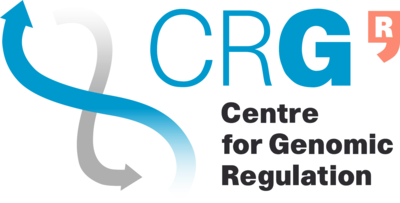Difference between revisions of "Publication:20181220125116"
Jponomarenko (Talk | contribs) (Created page with "{{Publication |URL=https://www.ncbi.nlm.nih.gov/pubmed/30522523 }} {{Annotation}}") |
Jponomarenko (Talk | contribs) |
||
| Line 2: | Line 2: | ||
|URL=https://www.ncbi.nlm.nih.gov/pubmed/30522523 | |URL=https://www.ncbi.nlm.nih.gov/pubmed/30522523 | ||
}} | }} | ||
| − | {{Annotation}} | + | {{Annotation |
| + | |Annotation=This paper is the output of an unprecendentally large Spanish-wide citizen-science project ran by CRG to study the mouth microbiome of healthy adolescents. It was a truly collaborative project, involving the CRG group, communication department and three facilities. This project was important for CRG to establish itself as a reference site for microbiome studies. Also, in the result of this project, the CRG Core Facilities programme has established a pipeline for providing the integrative service for microbiome studies - from DNA extraction to final analysis of sequencing data. Topics: metagenomics, human microbiome, citizen science. Impact Factor 10,5. | ||
| + | }} | ||
Latest revision as of 15:57, 9 June 2020
| Publication | |
|---|---|
| URL | https://www.ncbi.nlm.nih.gov/pubmed/30522523 |
| Title | Citizen science charts two major "stomatotypes" in the oral microbiome of adolescents and reveals links with habits and drinking water composition
|
| Authors | Jesse R. Willis, Pedro González-Torres, Alexandros A. Pittis, Luis A. Bejarano, Luca Cozzuto, Nuria Andreu-Somavilla, Miriam Alloza-Trabado, Antonia Valentín, Ewa Ksiezopolska, Carlos Company, Harris Onywera, Magda Montfort, Antonio Hermoso, Susana Iraola-Guzmán, Ester Saus, Annick Labeeuw, Carlo Carolis, Jochen Hecht, Julia Ponomarenko, Toni Gabaldón |
| Date | 2018-12-06
|
| Publisher | Microbiome |
| DOI | 10.1186/s40168-018-0592-3 |
| Tag | Adolescent, Adult, Bacteria, DNA, Bacterial, DNA, Ribosomal, Drinking Water, Feeding Behavior, Humans, Hygiene, Life Style, Metagenomics, Mouth, Neisseria, Phylogeny, Prevotella, RNA, Ribosomal, 16S, School Teachers, Sequence Analysis, DNA, Spain, Metagenomics, Oral microbiome, Stomatotypes, Tap water composition |
BACKGROUND: The oral cavity comprises a rich and diverse microbiome, which plays important roles in health and disease. Previous studies have mostly focused on adult populations or in very young children, whereas the adolescent oral microbiome remains poorly studied. Here, we used a citizen science approach and 16S profiling to assess the oral microbiome of 1500 adolescents around Spain and its relationships with lifestyle, diet, hygiene, and socioeconomic and environmental parameters. RESULTS: Our results provide a detailed snapshot of the adolescent oral microbiome and how it varies with lifestyle and other factors. In addition to hygiene and dietary habits, we found that the composition of tap water was related to important changes in the abundance of several bacterial genera. This points to an important role of drinking water in shaping the oral microbiota, which has been so far poorly explored. Overall, the microbiome samples of our study can be clustered into two broad compositional patterns (stomatotypes), driven mostly by Neisseria and Prevotella, respectively. These patterns show striking similarities with those found in unrelated populations.
CONCLUSIONS: We hypothesize that these stomatotypes represent two possible global optimal equilibria in the oral microbiome that reflect underlying constraints of the human oral niche. As such, they should be found across a variety of geographical regions, lifestyles, and ages.
| Annotation | This paper is the output of an unprecendentally large Spanish-wide citizen-science project ran by CRG to study the mouth microbiome of healthy adolescents. It was a truly collaborative project, involving the CRG group, communication department and three facilities. This project was important for CRG to establish itself as a reference site for microbiome studies. Also, in the result of this project, the CRG Core Facilities programme has established a pipeline for providing the integrative service for microbiome studies - from DNA extraction to final analysis of sequencing data. Topics: metagenomics, human microbiome, citizen science. Impact Factor 10,5. |
|---|
